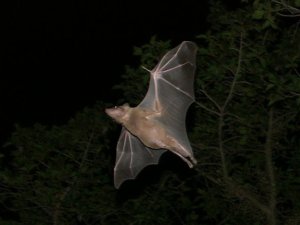
NSF – BSF success stories
As we celebrate the 10th anniversary of BSF’s partnership with the United States National Science Foundation, we honor what this agreement has meant, not only to both nations, but also to the advancement of science itself.
The NSF-BSF partnership began with the belief that our world would be enormously enriched if Israeli and American scientists worked together. Here are just two among countless examples of successful projects that have helped us achieve that mission. One team has discovered how robots can make surgeries safer. The other has provided profound new insights on how the brain helps mammals to navigate spaces.
Enhanced robot planning could make invasive surgeries safer
The adage that success takes planning is not only true for humans. Robots must make plans too. Thanks to a project funded jointly by the United States National Science Foundation (NSF) and BSF, a binational team of researchers from the Technion in Haifa and the University of North Carolina at Chapel Hill have found a way to help robots “prepare” more successfully – and the findings could make invasive surgeries safer.
The project is being led by Dr. Oren Salzman, head of the Technion’s Computational Robotics Lab (CRL) and Prof. Ron Alterovitz, who leads UNC’s Computational Robotics Research Group.
Robots in a variety of scenarios must plan their motions to efficiently inspect regions of interest.
“With this project, we are tasked with planning motions for a robot that enable it to efficiently inspect a region of interest using its on-board sensors,” Salzman said. “Such an inspection plan should not only inspect the region of interest but also obey the robot’s kinematic constraints, avoid obstacles and focus on key metrics, such as time to completion or distance traveled.”
Inspection plans are extremely challenging and current approaches to computing them are either highly tailored to specific applications, provide no guarantees on the quality of solution, or come with exceptionally long computation times.
The team is responding by developing a theoretically grounded algorithmic framework for robot inspection planning that is efficient, effective, generates high-quality solutions, and robustly considers the uncertainty inherent in real-world robotic applications.
“We want to apply our new algorithmic framework to several representative applications, including enabling a novel minimally-invasive surgical robot to diagnose patients with a collapsed lung by efficiently inspecting the surface of the lung,” Alterovitz said.
In this process, an algorithm expertly steers surgical needles to clinical targets inside the body without damaging surrounding tissue.
Many surgical procedures require a needle to be moved inside the body without damaging other tissues. This already complicated process is further complicated if the procedure’s target is close to or behind those tissues. Historically, surgeons have performed this task manually. The motion planning algorithms Salzman and Alterovitz are working on would assist the surgeon by steering the needle automatically.
Critical for complex and otherwise invasive medical procedures such as certain cancer therapies and biopsies, this real-world solution stems from years of rigorous research in computer science and robotics, like that being conducted now in the duo’s current NSF-BSF collaboration.
Study of fruit bats helps unlock secrets of the brain’s GPS
Way before the advent of GPS, the human brain has always navigated through its own cognitive maps. But what is its secret – and how does it know where it’s going?

Weizmann Institute of Science neuroscientist and BSF-NSF-NIH grantee Prof. Nachum Ulanovsky is breaking research norms and going to enormous lengths, literally, to better understand the neural basis of real-world navigation.
Using the world’s first 200-meter experimental flight tunnel specially constructed for his research, Ulanovsky and his team are studying the natural behavior of Egyptian fruit bats. These bats have been outfitted with tiny implants and advanced wireless data loggers to allow for detailed brain tracking while in flight.
By taking his research out of the confines of a controlled laboratory and into his unconventional bat tunnel, Ulanovsky discovered a novel neuronal code for spatial perception in the hippocampus (the part of the brain responsible for learning and memory) and upended a longstanding Nobel Prize-winning theory on the subject.
The scientist’s research followed up on the findings of John O’Keefe, who 50 years ago discovered specialized neurons in the hippocampus. These neurons were found to be activated when a lab animal enters a particular space in its environment. O’Keefe was awarded a Nobel Prize in Medicine in 2014 for this discovery.
However, O’Keefe’s research was performed on rodents navigating in small environments. Ulanovsky and his team discovered that while these findings were accurate for small spaces, this was not the case for bats and other mammals navigating large environments in nature.

“In one night, a bat can cover an area that is about 20 kilometers long, two kilometers wide and half a kilometer high. This is very different from the one square meter boxes that constitute the traditional experimental setups,” Ulanovsky told the Jerusalem Post.
Now, he’ll be applying his new-found insights to his recently-awarded NSF-BSF-NIH Computational Neuroscience (CRCNS) grant, where he and fellow Weizmann scientist Dr. Liora Las, along with U.S. collaborator Prof. Johnatan Aljadeff from the University of California San Diego’s Division of Biological Sciences will put their experimental and theoretical heads together to uncover more mysteries of the freely-moving mammalian brain.
Since both animals and humans navigate in expansive and complex environments, where they face demanding and unpredictable situations, Ulanovsky hopes this research will eventually lead to a better understanding of how human brains navigate different spaces and surroundings. The more animals – such as bats – are studied doing their natural behavior, the more scientists can better understand how the brain works.
“We believe that our findings are applicable to spatial perception of very large environments across mammalian species, including humans,” Ulanovsky said.
